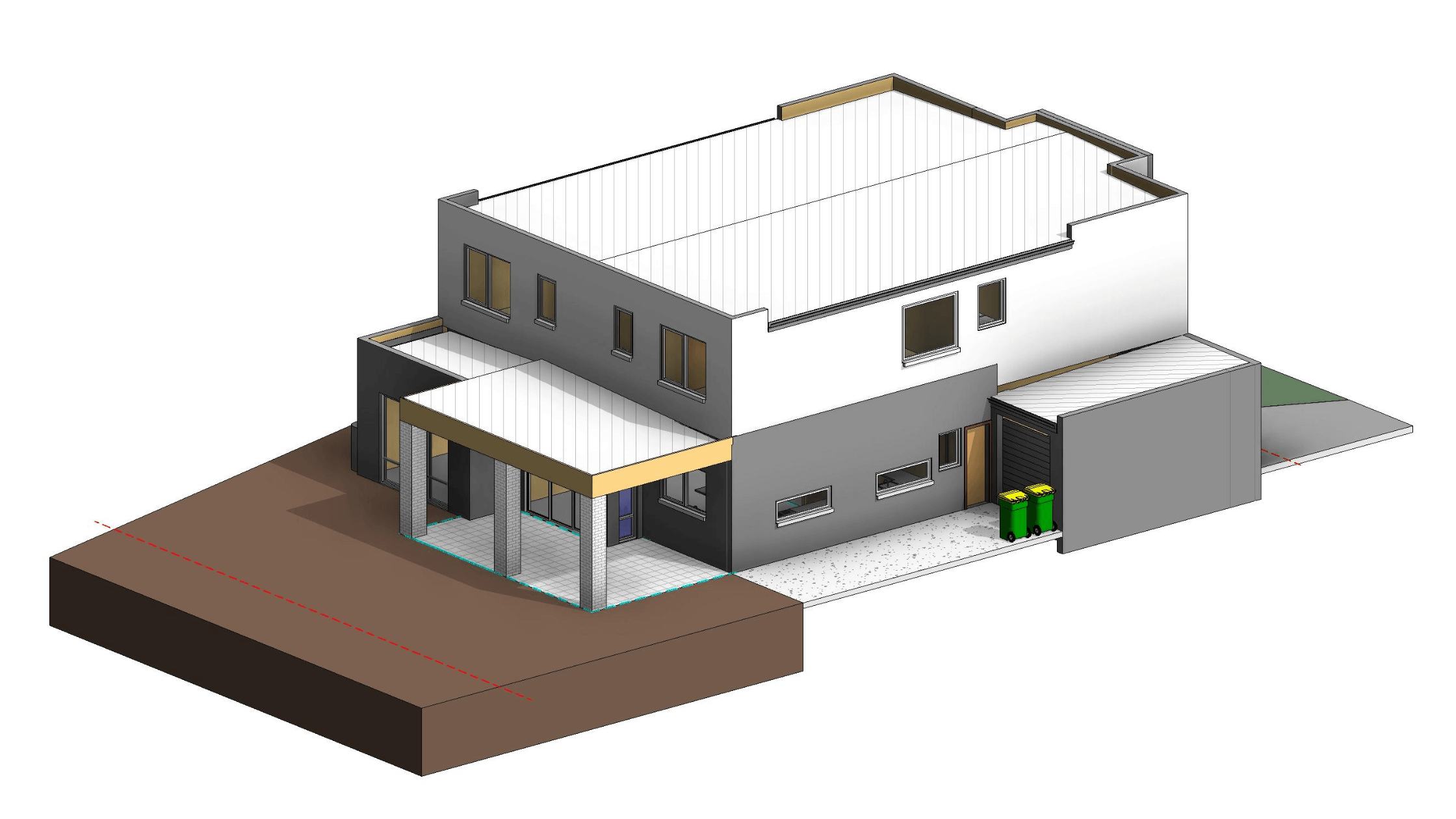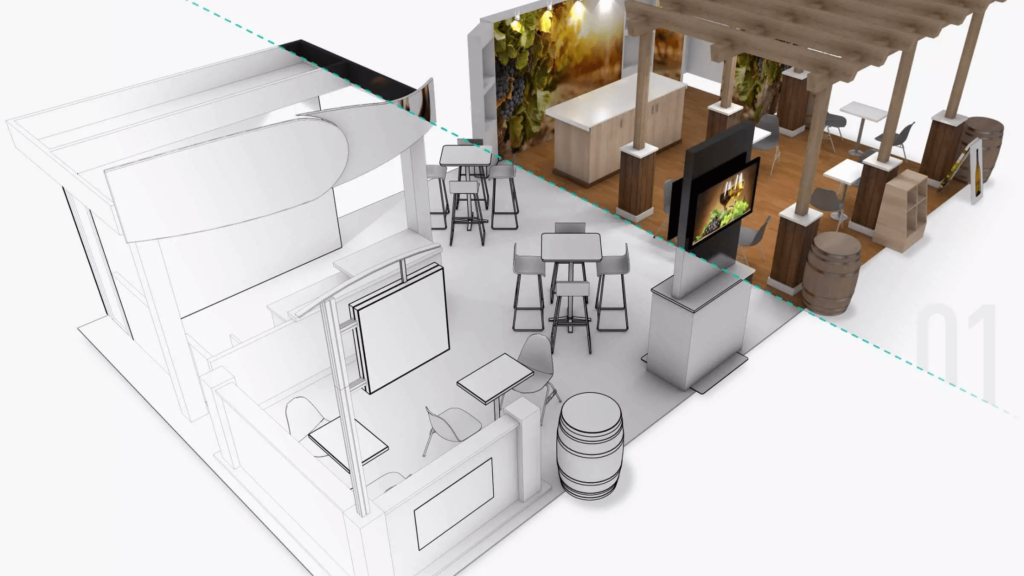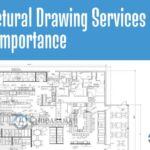Quick summary: 3D Rendering vs. 3D Modeling: Explained! Care for the differences between constructing 3d models and figuring them out into lifelike pictures.
The significance of inquiring into the difference between 3D modeling, as well as the process of creating virtual versions for objects, and 3D rendering, which implies the formation of giveaway images, is attributed to design, as well as construction.
Employing various innovative mechanisms, these technologies allow architects and designers to present their ideas with unprecedented clarity and realism, reshaping the fundamental concept of building and structure creation.
Innovations in 3D modeling and rendering stand strong as revolutionary tools in the contemporary world of construction and architecture. In this blog post, we try to sort major discrepancies between these two approaches and highlight why they changed the way we see and understand projects.
However, whereas each of them aims at achieving wonderfully impressive visual constituents, becoming aware of their individual features and limits is an essential requisite for successful implementation in the U.S., construction and layout domains. However, closely related, 3D modeling and rendering address distinct stages and objectives in a project. Let’s see what the differences are.
Defining 3D Modeling
To put it in other words, 3D modeling refers to digitally sculpting an object or a scene in three dimensions. First and foremost, it is the basis of everything—a site on which construction or architectural design starts.
Solid modeling produced by specialized software allows architects to create highly accurate geometric representations of structures that can be manipulated to test various strength properties, types of materials, and spatial variables.
It gives life to the notion, of becoming a virtual reality in regard to which further pondering is possible, as well as some common action.
The standard uses of 3D modeling are as follows- planning digital mock-ups of buildings, developing detailed plans to be used by the construction professionals, and also as the referral point for subsequent stages of design review.
The models serve as an ideal source of information whereby they also remain as the primary reference point throughout the construction process.
Defining 3D Rendering
Modeling is confused with 3D rendering which represents the process of surface description, shading, colorization, and lighting of a 3D image or animation.
They produce visualizations that resemble photographic images and could be useful to market real estate projects, obtain government permits, or convince investors. Likened to the models’ potential to materialize, renderings provide a tangible impression of how a completed project would look in its surroundings or the implications it would have on the final users.
A person can imagine 3D rendering as a technical rehearsal before a premiere which has been aimed at a preview and a perfect improvement of every visual detail before the building process starts.
Differences Between 3D Modeling and 3D Rendering
In the phase of 3D modeling, much focus is placed on the stage of the blueprint and working out the main details of construction. In contrast, 3D rendering is the process of the final lot of the aesthetic finishing and provides a project’s visual appeal.
Distinct Purposes and Goals
Yet, 3D modeling highlights the dimensions, form, and fittings but rendering attempts to illustrate the beauty of a product, say how the light bounces off surfaces or the ambiance a new structure adds. The aims vary— one is the roadmap and structure while the other tells a story through images.
Process and Techniques Involved
Modeling is a more technical procedure that is essentially mathematically complicated, availing as an independent process in which design elements coordinate in a spatial relationship. A visually rich aesthetic, the rendering depicts scenes from photography and cinematography archetypes.
Output and Deliverables
The end product of 3D modeling is usually a model file that can be opened in modeling software for viewing and editing. Instead, rendering gives rise to either static images or animation files which in turn require high computational capacity for the production of the final high-quality images.
Benefits of 3D Modeling in Construction
Architects, engineers, and construction professionals can’t have enough of 3D modeling since it contributes to a better understanding of the material relations more accurate planning, and fewer mistakes.

However, it may be deficient in making the elaborate emotional character of design evident, not showing how various materials are to be utilized under the influence of different illumination or the building potential effect of normal components on the building.
The Benefits of 3D Rendering
The ability of renderings to produce such immersive and emotionally engaging imagery often helps to connect with clients and the general public. Animations filling that lacuna between technical design and lived experience are their photorealism. However, the process can be expensive, taking on the complexities of specialized skills, software and lengthy time investment.
Which should you choose from among 3D modeling and 3D rendering?
My concern is how one should pursue a career in 3D graphics, either modeling or rendering. These are two important skills one needs for the industry but in some aspects of industries, they demand different knowledge and skills.
Which should you choose? If you desire to creatively use your intelligence to design new projects, then the best option would be 3D modeling. If you are a software lover than 3D rendering technique would be a perfect match to your interest.
Conclusion
If 3D visualization becomes a prevalent tool in the United States, architects and construction workers must understand the difference between 3D modeling and rendering so they will know how to spend their resources wisely, maintain proper communication with the client, and realize architectural dreams.
The utilization of each for its particular abilities is crucial not only for fulfilling the most practical obligatory requirements of a project but also for achieving the most aesthetic desires – in such a way we get the desired result.
Integrating 3D modeling services as well as 3D rendering services for anyone in construction visualization will prove beneficial. It will then mean that there can be better accomplishment of these tools in the future that will eventually make the ideas come up only to end in action.
If you plan on your next grand construction or architectural production make sure to remember those differences and enjoy the amazing opportunities 3D technology has to provide.




